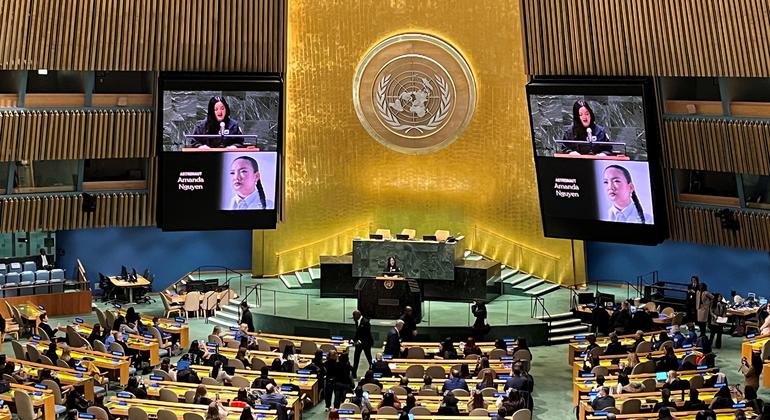“While there has been progress, women still constitute merely a third of the global scientific community and encounter significant obstacles in securing funding, publishing their work, and attaining leadership positions in STEM fields,” stated Secretary-General António Guterres in a message for the occasion.
As we celebrate the 10th anniversary of the International Day of Women and Girls in Science on February 11, it is crucial to recognize the urgent necessity of dismantling these barriers.
This year’s theme, Unpacking STEM Careers: Her Voice in Science, emphasizes the vital importance of empowerment and the need to ensure that women have equal access to opportunities.
The Essential Role of Education
Education is fundamental in achieving gender parity in STEM; however, 122 million girls around the globe remain out of school, as reported by the UN Educational, Scientific and Cultural Organization (UNESCO).
Even among those who receive formal education, ingrained gender stereotypes and societal norms often dissuade many girls from pursuing careers in science.
During the 10th-anniversary celebration, H.E. Philémon Yang, President of the General Assembly, stressed the necessity for proactive measures: “With the rise of artificial intelligence and new technologies transforming the economy, it is essential that women and girls acquire the skills to take advantage of these opportunities.”
He highlighted a stagnation in progress over the last decade, with only 15% of young female graduates opting for STEM fields compared to 35% of their male counterparts.
Breaking Down Barriers
The underrepresentation of women, particularly in artificial intelligence, can lead to biased technologies that reinforce inequality, explained Mr. Guterres.
Increased diversity in STEM not only fosters equitable systems but also stimulates economic growth.
The World Economic Forum projects that if the female representation in the technology workforce is doubled by 2027, it could contribute an additional 600 billion euros to the global economy.
To tackle these challenges, UNESCO and UN Women advocate for gender-sensitive teacher training, mentorship programs, and enhanced investment in STEM education for girls.
A Milestone Occasion for Women
A standout moment of this year’s event was a panel discussion featuring female astronauts at UN Headquarters in New York, showcasing 16 remarkable women who collectively represent nearly 20% of all women astronauts worldwide.
Among the panelists was astronaut Amanda Nguyen, founder of Rise, an organization supporting sexual assault survivors. “The dreams of women survivors still matter, even those seemingly outrageous, like traveling to space,” she declared to the Assembly.
Her statement resonated deeply, particularly as the National Institutes of Health reported that over 50% of women in STEM faculty and staff have experienced sexual harassment.
Reflecting on her experiences in space, former astronaut Dr. Cady Coleman noted, “The only individuals who can assist you are those beside you,” stressing the necessity for the global community to unite in action.
Shaping Tomorrow’s Innovations
This year’s commemoration serves as a reminder that solving global challenges—from climate change to public health—demands the full engagement of women and girls in scientific fields.
As we mark the 30th anniversary of the Beijing Declaration and Platform for Action, global leaders are encouraged to move beyond mere symbolic gestures and instead pursue concrete initiatives to bridge the gender gap in STEM.
“We understand the solutions,” emphasized Mr. Yang, advocating for targeted policies and sustained investment in STEM education. “Let’s not only commemorate these milestones but also honor them through decisive action,” he concluded.
The recently introduced Pact for the Future underscores the imperative role of science in advancing gender equality, aiming to dismantle systemic barriers and expand opportunities for women in STEM.


